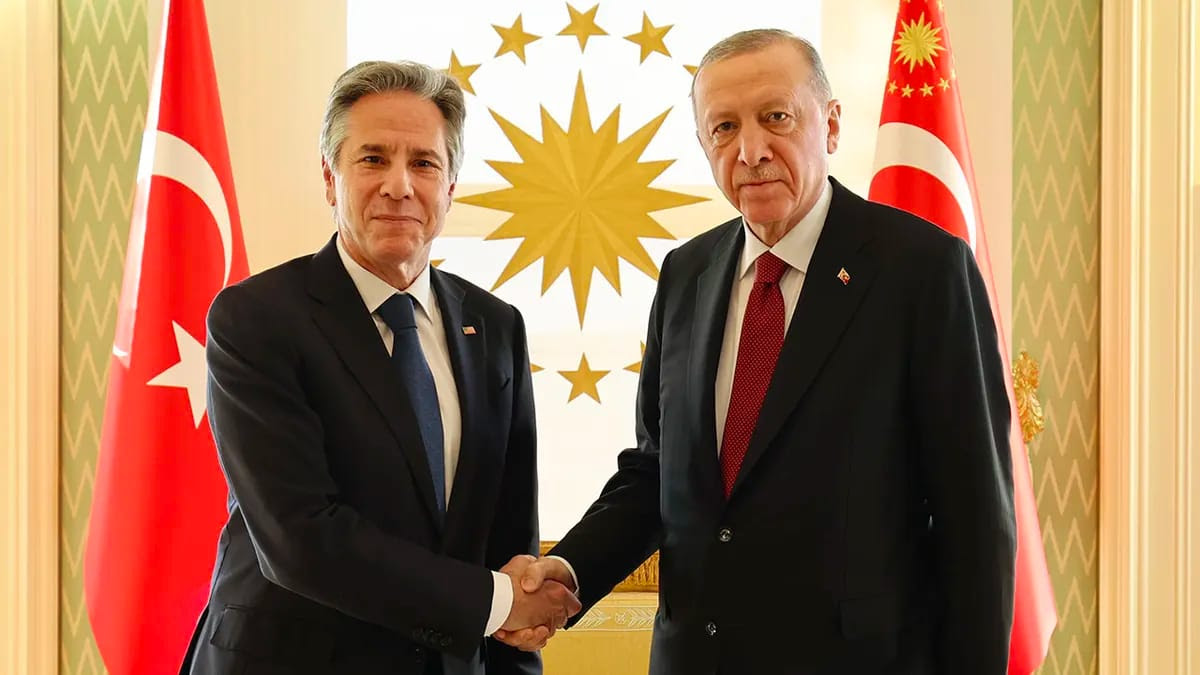The Iranian-backed Lebanese militant group Hezbollah fired about 40 rockets into Israel last Saturday, raising concerns of military conflict along Israel’s northern border with Lebanon. Hezbollah’s rocket attack was allegedly in response to the reported assassination of senior Hamas leader Saleh al-Arouri in an Israeli air strike on 2 January.
Ever since Hamas’ attack on Israel on 7 October, US and other Western officials have been concerned Israel’s response could lead to a multi-front regional war. So far, diplomatic efforts – including frequent trips to the region by US and European officials – have avoided that.
According to a Washington Post report published yesterday citing a US intelligence assessment, the primary source of risk of escalation of the conflict comes from within the Israeli government itself.
Stay on top of your world from inside your inbox.
Subscribe for free today and receive way much more insights.
Trusted by 114,000+ subscribers
No spam. No noise. Unsubscribe any time.
Several senior Israeli officials have been pushing for a pre-emptive strike against Hezbollah since the original Hamas attack, and Israeli Prime Minister Benjamin Netanyahu said yesterday that Hezbollah should “learn what Hamas has already learned in recent months.”
What might a wider conflict look like?
- Hezbollah could increase its rocket attacks but target more sensitive sites in Israel like chemical plants or nuclear reactors. However, initial analysis suggests Hezbollah does not want to escalate the conflict.
- There are worrying signs that violence is continuing to spread from Gaza into the West Bank after more than a dozen people died (including nine Palestinians) from clashes there on Sunday.
- Further south, Yemen-based Houthi rebels have spent the last few months attacking shipping in the Red Sea and sending drones to attack Israel. The US has warned the Yemen peace plan with Saudi Arabia will fall apart if the attacks continue.
- Other Iran-backed militias in the region could step up attacks, including against US military personnel in Iraq and Syria.
Any combination of the scenarios above would make a bad situation far worse, including for Israel, which military analysts believe may struggle in a multi-front war.
The US is clearly worried. Secretary of State Blinken is currently on his fourth trip to the region in three months, visiting Turkey, Qatar, Jordan, Saudi Arabia, and Egypt to enlist regional governments’ help to contain the conflict. He will also visit Israel and the West Bank tomorrow.
Meanwhile, Israel’s military response in Gaza continues, including an airstrike which killed two journalists yesterday.
INTRIGUE’S TAKE
The Washington Post said its report was based on classified intelligence and interviews with a dozen Biden Administration officials and diplomats. These don’t appear to be unauthorised leaks but intentional background briefings by the Biden Administration designed to sway public opinion in the US and Israel.
But in Israel, Netanyahu’s prime ministership is likely finished once the military conflict with Hamas is over, which some argue gives him an incentive to widen the war. And even Netanyahu understands the dangerous ramifications of getting Hezbollah embroiled.
In the US, Biden is trying to convince voters – particularly unhappy, younger ones – that his administration is doing everything it can to constrain Israel and limit civilian deaths in Gaza while publicly supporting Israel’s right to defend itself.
It has become an increasingly tricky line for the President to walk.
Also worth noting:
- The Israeli Supreme Court, sitting with all 15 of its justices for the first time in its history, struck down a law passed by Prime Minister Netanyahu’s government designed to limit the court’s ability to review government decisions. The law had triggered some of the largest protests in Israel’s history last summer.
- Hackers attacked information screens in Beirut airport yesterday, replacing flight information with an anti-Hezbollah message.









